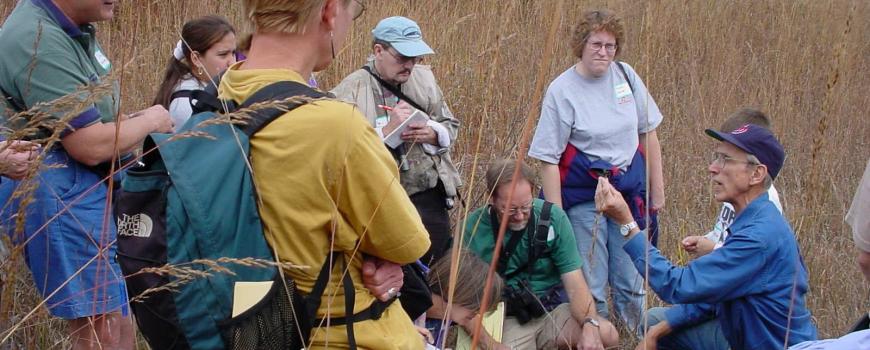As you emerge from the woodlands, notice the change in the feel of the air – the environmental factors of temperature, light, wind. This is the boundary between two microclimates, which creates patches of communities with different light and moisture requirements.
Look out over the 14-acre expanse of prairie between you and I-675. This is a reconstructed tallgrass prairie, planted in 1986 after Interstate 675 was built along the edge of the MSJ property. This part of Ohio is rich in sand and gravel, a legacy left from the glaciers which plowed the materials into our area like a bulldozer, leaving the land to the north of Dayton flat. The pit in front of you is a borrow pit from which sand and gravel was removed to construct the highway. This is a disturbance that far exceeds the normal cycles of floods, fires, and wind in severity. Because the excavation removed the soil, this pit is an example of primary succession, similar to the disturbance caused by the glaciers themselves. (In secondary succession, the soil is not removed.)
Dr. Don Geiger, a Marianist brother, biology professor at the University of Dayton and MEEC founder, selected the tallgrass prairie species you see here. Because prairies thrive in harsh, dry conditions and have extensive root systems (2/3 of a prairie plant is located below-ground), they thrive in the nutrient-poor and dry conditions here. Mosses can be found throughout the prairie in the bare patches between the grasses, adding organic matter for soil health, trapping moisture and providing protection for seed germination.
Today, the prairie is one of Ohio’s rarest ecosystems. Most of the 300 or so “prairie islands” the first European settlers encountered were converted to farmland or have been invaded by trees since the suppression of natural fires.





